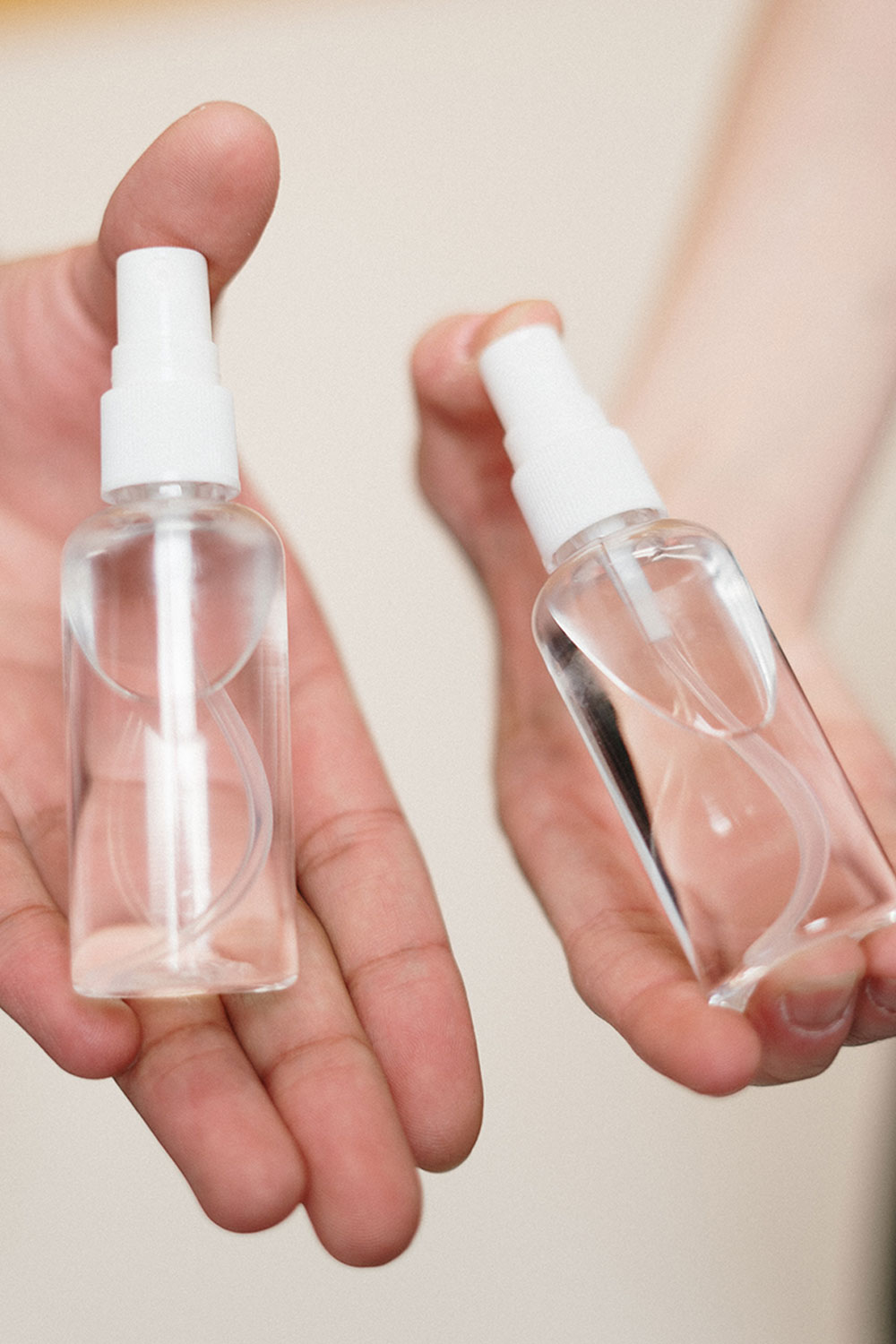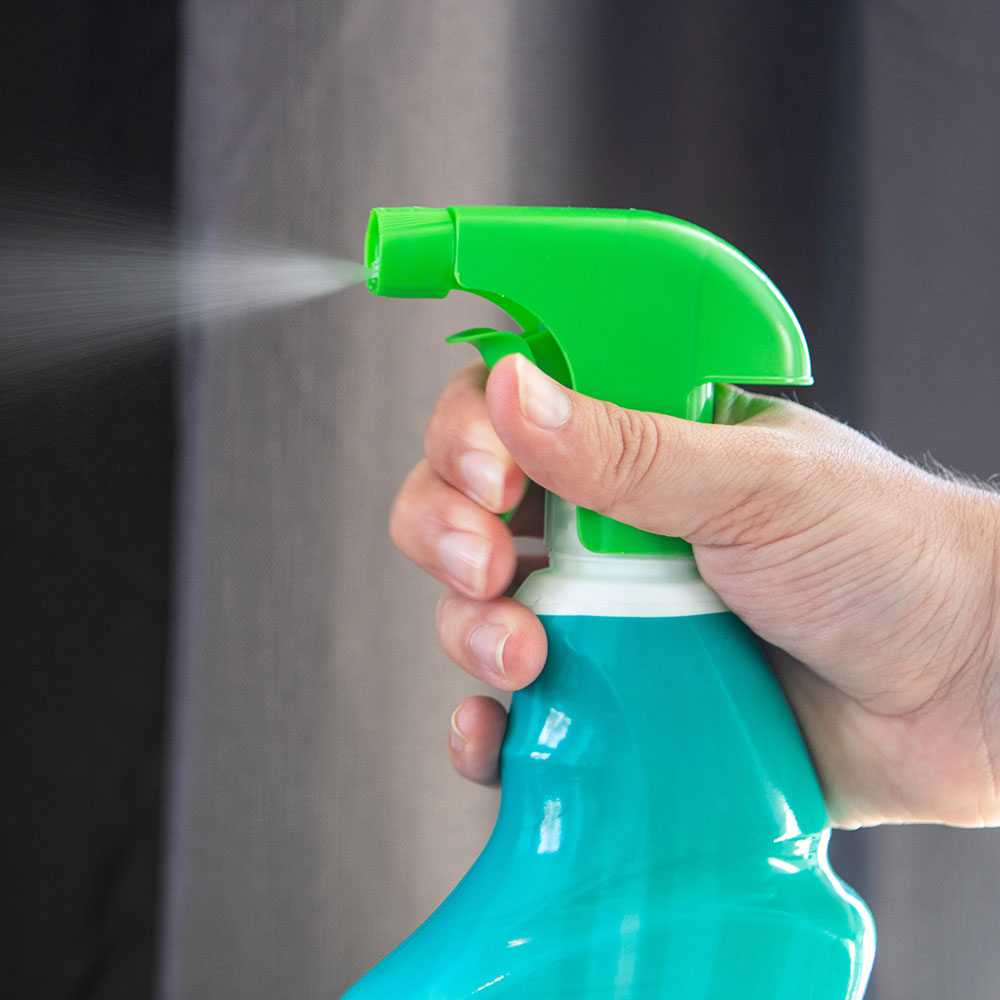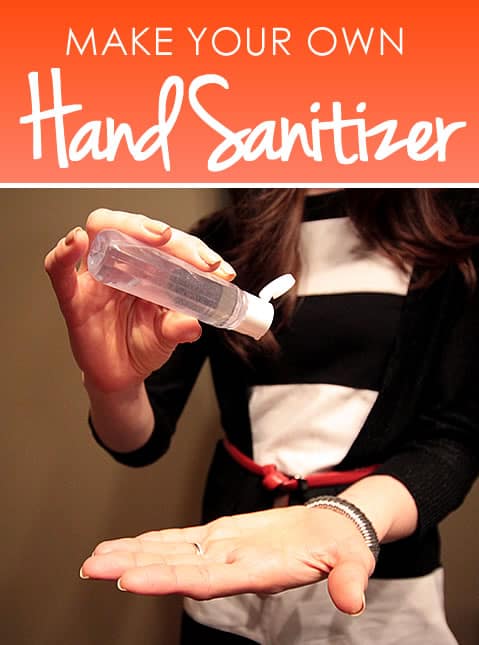How To Make Hand Sanitizer At Home
As the spread of COVID-19 (Coronavirus) continues throughout the world, we are learning more about how to stay safe and avoid this virus.
During this pandemic, washing your hands, avoiding touching your face, and keeping your distance from others, could play a vital role and help you avoid becoming sick.
While it’s very important to be practicing all of these precautions, sometimes there isn’t a place to wash your hands within reach. In this case, using hand sanitizers can be a good option for preventing the spread of germs and illness.
The problem? Most stores are sold out of hand sanitizers amid the panic that this virus has caused. So we’re going to cover how you can make your own homemade hand sanitizer in just a few steps with items you may already have around your house. We’ll show you a few different recipes for hand sanitizer that you can use to stay safe through this pandemic.
*** According to a March 26, 2020 public guidance memo, the TTB (Alcohol and Tobacco Tax and Trade Bureau) is temporarily waiving certain formula approvals for the manufacture of hand sanitizer and expediting certain permit requirements. ***
Alcohol Potency Is Important
The first thing to note before we get started is that the potency of your hand sanitizer is very important. You want to make sure that you’re using enough alcohol in the mix so that it can kill any germs it comes in contact with. Otherwise, the sanitizer won’t be an effective tool. So some of those lower proof whiskies and vodkas you have around the house won’t be strong enough for this project.
According to the CDC (Centers for Disease Control), a proper hand sanitizer mix must be at least 60% to 90% ethyl alcohol to be effective in killing germs. We don’t want to take any chances so for our hand sanitizer recipes, we’ll aim for a minimum of 75%.
The Quick and Simple Gel Hand Sanitizer Recipe
Ingredients/Items You’ll Need:
- Isopropyl alcohol
- Aloe vera gel or glycerin gel
- Tea tree oil or lavender oil or lemon juice
- Spray bottle
1. First, combine 2 parts isopropyl alcohol to 1 part aloe vera gel or
glycerin gel.
2. After you’ve very thoroughly mixed the alcohol and gel
together, add a few drops of tea tree oil to give the mix a pleasant scent.

3. Lastly, fill your bottle(s) and let sit for 72 hours before use. (The World Health Organization recommends letting your homemade hand sanitizer sit for a minimum of 72 hours before use. This will give the sanitizer time to kill any bacteria that may have been introduced during the mixing process.)
Homemade Alcohol Hand Sanitizer Recipe
Like we mentioned before, lower proof whiskeys and spirits won’t cut it for making a homemade hand sanitizer. If you don’t have any Isopropyl alcohol on hand then we recommend using your own homemade alcohol as long as it is at least 190 proof (95% ABV).
Ingredients/Items You’ll Need:
- Homemade Alcohol (at least 190 proof)
- Aloe vera gel or glycerin gel
- Tea tree oil or lavender oil or lemon juice
- First, combine 2 parts alcohol to 1 part aloe vera gel or glycerin gel and mix very thoroughly.
- After you’ve mixed the alcohol and gel together, add a few drops of tea tree oil to give the mix a pleasant scent.
- Lastly, fill your bottles and let sit for 72 hours before use. (The World Health Organization recommends letting your homemade hand sanitizer sit for a minimum of 72 hours before use. This will give the sanitizer time to kill any bacteria that may have been introduced during the mixing process.)
Homemade Disinfectant Recipe
Making homemade disinfectant is a much easier process than making homemade hand sanitizer. You can use your own homemade alcohol for this as well as long as it at least 120 proof (60% ABV).
Ingredients/Items You’ll Need:
- Homemade Alcohol or Isopropyl alcohol (at least 120 proof)
- Tea tree oil or lavender oil or lemon juice (For a better scent)

Simply combine your alcohol with your tea tree oil, lavender oil, or lemon juice and mix very thoroughly. Then pour the mix into a spray bottle and you’ve got your own homemade disinfectant spray!
Coronavirus Best Practices
We’re sure that you’ve probably already seen these, but just in case here are some good measures to take to help stay safe during this pandemic.
- Stay at Home: Except for making essential trips like buying groceries, or to see your doctor, stay at home and away from others who could be infected.
- Wear a Face Mask Outside: If you do have to leave your home, be sure to wear a face mask outside. The CDC now recommends that everyone wear cloth face masks, when you go out in public or are near other people.
- Keep a Distance of 6 feet Away From Others: Also known as social distancing. By keeping your distance from others, you limit the virus’s ability to spread by “jumping” from someone else to you and vice versa.
- Wash Your Hands Regularly: Wash your hands for at least 20 seconds with soap and hot water. Washing your hands with soap is always preferable to using hand sanitizers. You should use hand sanitizers when you’re traveling or unable to wash your hands.
- Avoid Touching Your Face and Head: You should avoid touching your face and head because doing so could transmit the virus. A good rule of thumb is to always assume that your hands aren’t clean and avoid the temptation to itch that scratch.
- Disinfect Surfaces Regularly: Clean and disinfect surfaces in your home regularly. Areas like door knobs, countertops, tables, etc.. Any surfaces that people in your home are using regularly.
And there you have it. We hope that you found this guide to making your own hand sanitizer at home helpful. Alcohol as a cleaning product has always been a very valuable resource to have on hand, but these days it’s becoming even more important.
By being able to make your own alcohol-based sanitizer and disinfectant you can help keep your family and community safer during this pandemic. We’d love to hear from you. Let us know if you’ve made your own hand sanitizer or disinfectant during the quarantine or leave any comments or questions below. Stay safe out there!
DIY Hand Sanitizer Gel Recipe
Here’s how to make your very own DIY hand sanitizer.
- 2 parts Rubbing Alcohol (at least 90%, but preferably 99%)
- 1 part Aloe Vera Gel (the less additives the better)
- 10 drops Essential Oils (optional—consider ones that have additional antiseptic properties i.e. lavender, thyme, clove, cinnamon leaf, peppermint etc.)
- Plastic squirt bottle or pump
How To Make Hand Sanitizer
Combine all ingredients together, stir well, and pour into a squeeze bottle (with a funnel). Done! You need to use a minimum of 60% rubbing alcohol for this to be an effective germ fighter so starting with at least 90% rubbing alcohol (not 70%), is a must. You can find rubbing alcohol as high as 99% which will be even more effective. Also—be forewarned: essential oils that are known to have anti-microbial properties can be a skin irritant to those with sensitive skin. Use fewer drops, or combine with soothing oils for a more balanced recipe (i.e. camomile). This keeps for about 6 months.
Results
It works! It smelled strong but the smell dissipated really fast and my hands weren’t shriveled old witch hands after using it. I wonder if this would work using plain shea butter but I don’t know enough about chemistry to determine if that would be a stable mix (see, I don’t just make things up or tell you about things I think will work). Some people add in a tablespoon of vegetable glycerine to the aloe vera for additional moisture. I may try this with the next batch.
Triclosan
OK, you’ve got my attention. I’m the biggest recovering hypochondriac you’ll ever meet and this is a buzz word for me. But I’ve learned through my worldly studies to research credible sources before concluding anything (and to not check Web MD constantly either). So that’s what I did when I saw this hot little word. According to the FDA website (I hear these guys know what they are talking about, just sayin’):
Other studies in bacteria have raised the possibility that triclosan contributes to making bacteria resistant to antibiotics. FDA does not have sufficient safety evidence to recommend changing consumer use of products that contain triclosan at this time. At this time, FDA does not have evidence that triclosan added to antibacterial soaps and body washes provides extra health benefits over soap and water. Consumers concerned about using hand and body soaps with triclosan should wash with regular soap and water
So on one hand, Triclosan could be a known contributor to creating resistance to antibiotics but on the other hand, there is no solid proof that it works any better than soap or water. I have allergies to a couple of antibiotics already, so for me, I feel it makes sense to keep away from Triclosan. That doesn’t mean everyone has to, you just have to make an informed decision.
That concludes my research, rant, and recipe for homemade hand sanitizer. Enjoy!
Disclosure: Some of the links above are affiliate links which means we will receive a small commission if you click through and purchase something.

Just a quick note that this article may contain affiliate links (Amazon and others) and any sales made through these links may result in Clean My Space receiving a small commission on qualifying purchases. Learn more here.
How to make your own effective hand sanitiser according to a germ expert
The coronavirus outbreak has caused sales of hand sanitiser to skyrocket. In the last three months sales of antibacterial gel Purell have spiked by 1,400 per cent.
For more cleaning tips visit our care and cleaning channel
Photos of decimated hand sanitiser supplies on supermarket shelves have been popping up online. There have even been reports of several Boots stores limiting the number of hand sanitisers customers can sell. But rather than battling the crowds, hand sanitiser is surprisingly easy to make.
Hand sanitiser works by killing germs. However, because it doesn’t actually wash the germs away, hot water and soap still remains the best defence against spreading bacteria and virus.
Scrubbing your hands for at least 20 seconds should rid your hands of any germs, dirt and debris. However, when you’re on the go giving your hands a good scrub is not always possible.
How to make hand sanitiser

Image credit: Ti-Media
If you like to keep a small bottle of hand sanitiser in your handbag or next to the front door, skip the trip to Boots and instead make your own. All you need is four ingredients, plus a container:
What you’ll need
- Rubbing alcohol (Isopropyl alcohol)
- Aloe vera gel
- Essential oil – we prefer a mix of lavender and tea tree
- A small bottle to contain your mixture – pump action works well
1. Fill your bottle two-thirds of the way full with alcohol.
At least 60 per cent of the solution needs to be alcohol according to germ expert, Professor Miryam Wahrman at William Paterson University.
‘The bottom line is that alcohol is the active ingredient. If you drop below 60 per cent, the effectiveness drops dramatically,’ she told Business Insider.
Dr David Agus, speaking to CBS News, agrees. ‘Homemade hand sanitisers are just as effective as what you buy as long as you use the right percentage of alcohol.’
Isopropyl alcohol, known as rubbing alcohol, is best to use, according to CBS.
A post shared by sipping my coffee (@sippingmycoffee) on Mar 4, 2020 at 2:26am PST
2. Add the essential oils
Add 10 to 15 drops of tea tree essential oil and lavender essential oil. Both oils have anti-bacterial properties as well as smelling amazing together. However, you can use any essential oil you like.
3. Top up with aloe vera gel
You should use approx one part aloe vera gel to three parts alcohol. The aloe vera will make the solution gentler on your skin but don’t overdo it or you’ll risk diluting the mixture. Some experts also advise you should leave the mixture for 72 hours to settle before you use it, to ensure any potential germs around when you made it are killed off!
4. Give it a mix
Shake the bottle – hard – and throw it into your handbag, ready for action. You may find that the mixture is slightly sticky but it will do the job.
Updated March 16: We do not link to ingredients in this article. Be aware that they are sold out or overpriced in some stores. We do not condone companies selling overpriced products and would advise you exercise caution and do not buy if you believe the price to be inflated.
Do exercise common sense when using your home-made sanitiser, however. For example, do not exposed hands to a naked flame and always do a patch test first to make sure your sanitiser doesn’t cause skin irritation.
Comments
Post a Comment